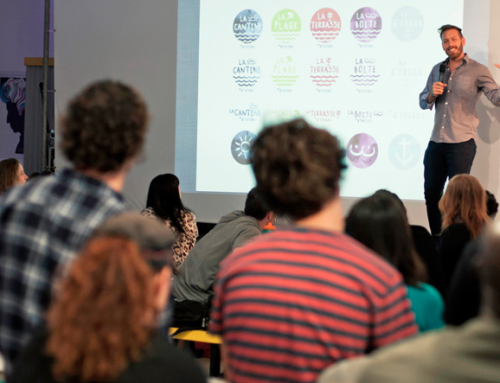The Basics on How to Blog through WordPress
I’ve designed and created 5+ websites and owned 3+ personal blogs in my lifetime. Most of which I have started, written a few posts, and royally fucked-up and left to die, so don’t act like that’s some wonderful statistic. Come to find out, what I truly loved about blogging was creating the brand and starting the blog, which is why I never really cared about keeping it updated. Luckily, I’m in advertising now, so soon I will be able to brand/create new ads and brands for my career instead of my hobby. Through my blogging and web design days I have learned quite a bit about what to do and a lot about what not to do, and if you care to finish reading this magical blog post I am going to share some insights and basic how-to’s about blogging through WordPress.
- If you’re starting your own blog, DO NOT, I repeat, DO NOT start from the WordPress website. DO NOT obtain any sort of WordPress blogging domain or hosting through WordPress, regardless of how excited you are to start. It is really going to screw you up, I can’t stress it enough. Go to godaddy.com and start by going to hosting WordPress hosting. This is the easiest and most efficient way to start a website.
- Watch tutorials. Seriously, do it. If you don’t know how to do something, Google “How to _________,” find 1,000 videos, pick the one with the best lighting and cutest vlogger, and set your mind on fire with WordPress information.
- Download a theme, and not a free one. Free themes are great if you’re a pro at the craft and like to have a place to start to create your own theme, but I’m guessing if you’re reading this post you aren’t a pro. Buy a theme that’s over $50, it’s worth the support you will receive with the theme. Buy a theme that looks like it has MORE than you want or need, because eventually you will probably use a bunch of shit you didn’t think you were going to. Read the documentation of the theme before importing it and bookmark the support page with previous user’s FAQ’s. It will come in handy when something goes wrong, because I promise you it will.
- If your theme doesn’t come with it’s own child theme, make one. If you don’t know how, which you probably don’t because I barely remember, look it up. A child theme is a replica of the main theme, but it contains all of your changes and personal updates to the theme so they don’t get affected when WordPress makes version updates. Follow directions in number two.
- Add the bare minimum to your WordPress site. Don’t go around and download a million different plugins to try them out. This could really mess with the code of your site through your theme or other plugins you have installed and actually need. Delete things you aren’t using, like themes and plugins that came with WordPress and random pages that were uploaded with your theme’s layout.
- LEARN BASIC HTML. It really helps when you know basic code so you can add a picture to this page, make the font on this word bold on this page, add a link to the website on this page. You get it. There are also a lot of problems that go wrong with the code in websites, and fixing them is a must if you want people to continue to look at your site. So, knowing basic HTML can help you when you’re searching for fixes to problems because most of them involve adjusting the code in the stylesheet, which is basically the brain of your website.
- Get an SEO pack plugin, and PUT SEO ON EVERY POST. That is how people see your posts. I prefer Yoast SEO Plugin. Google what SEO is and learn about how you can optimize your posts. Keywords and titles are KEY and there IS a science to it. If you don’t give a shit, which you should, BUT if you don’t give a shit then stay lame and don’t download an SEO plugin.
- Get Google Analytics! If you don’t know where you’re at currently, how are you supposed to measure where you are going? This will show you many statistics, the main being how many people are going to your website.
- Have fun making things pretty! That is the most enjoyable part of creating a blog, being able to make it YOU through the design and copy. Enjoy it!
The basics on how to write your first blog post:
- To activate any WordPress blog on the back-end, you type in the URL of the website and then add /wp-login at the end.
- When you log in it will bring you to the dashboard. Click on Posts on the left side of the screen.
- This will show you all posts that have been written on this blog, and you can sort them by date or name in order to find a post that already exists. You can add a new blog post by clicking Add New at the top left of this page.
- Enter your title, but keep in mind that this will turn into the URL of the page. You can edit it later if you want to.
- When you add content, there is a visual side and a text side. The visual side is what the post will look like when you post it, the text side will show code instead of visuals where it is fit. Work in the visual side if you don’t know code.
- Add SEO. Title, keywords, description, and whatever else you care to add that exists in your SEO pack. Those three are key, though. The title must be catchy. That is what is going to show in google searches. Keywords must be relevant and they must appear in your post. Description must involve both the content of the post and your keywords. The most effective SEO creates a bridge between the content and all aspects of the SEO.
- Save your draft before you publish. This will be found in a box on the right side of the ‘add post’ page. It will show you the status and visibility, among other things. ALWAYS PREVIEW YOUR BLOG BEFORE YOU PUBLISH IT.
- Check the format of your blog post, which is located under the ‘publish’ box on the right. Do a little research and test each format before you choose one. Standard is probably best.
- Categorize your blog post in the Categories box. You can delete categories and add new categories.
- Set a featured image, all good blogs have a good image or video.
- Tag your blog post. Or don’t. Tags are located underneath the categories box. Determine if it is relevant by looking up what tags are.
- Post and share! Share on social media and make people read!






